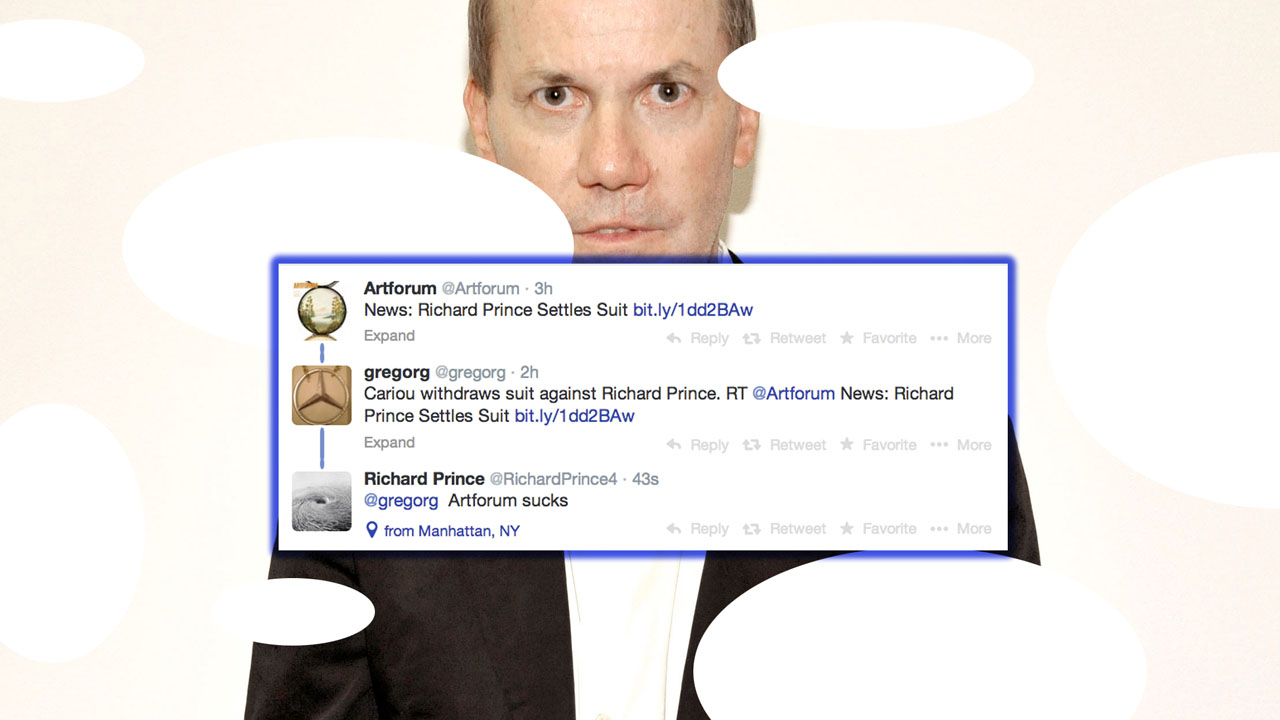What just happened?
Well, artist Richard Prince appropriated the photographs of Jamaican Rastafarians by Patrick Cariou to make million-dollar-selling “Canal Zone” series of works; it’s been a legal, copyright infringement vs. fair use mess for five years. In 2011, the federal court ruled against Prince. In 2013, the United States Court of Appeals for the Second Circuit ruled (mostly) for Prince. Now, Prince and Cariou have “reached a settlement” but what does that EVEN MEAN ANYMORE? We asked Greg Allen, who has been entrenched in all this.

Gerg Allen has published tomes of detailed appendixes chronicling the case of explanations, illustrations and actual court documents. (And once made a very convincing case that Richard Prince made “Bob Dylan’s” art, LULZ).
“We don’t know why Cariou dropped his claim now, or if any deal was cut, but from the court records, it sure doesn’t seem like it,” Greg Allen explains to ANIMAL. “So the apparent lack of a payday and the court’s previous ruling for Prince, might take the edge off the copyright infringement threat for a while.”
Yey for appropriation. What about those five works that — unlike the 25 already judged fair use for having “an entirely different aesthetic” than Cariou’s — were sent back for determination, forcing judges to critique art and lawyers to study appropriation art history? While those works’ status and terms of settlement are not disclosed, it is said that the court does not intend to destroy them, as previously suggested.
“Personally, as a spectator, I’m little bummed that we won’t get to see the dadaist theater of a lawyers, experts, and a judge calculating the infringiness of these last five Prince paintings, which were supposedly so different from the 25 others that they were declared fair use,” Allen notes. “But now that Prince gets his paintings back, who knows, maybe he’ll go for the big finish by lighting them all on fire.” Again.



